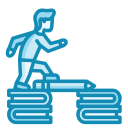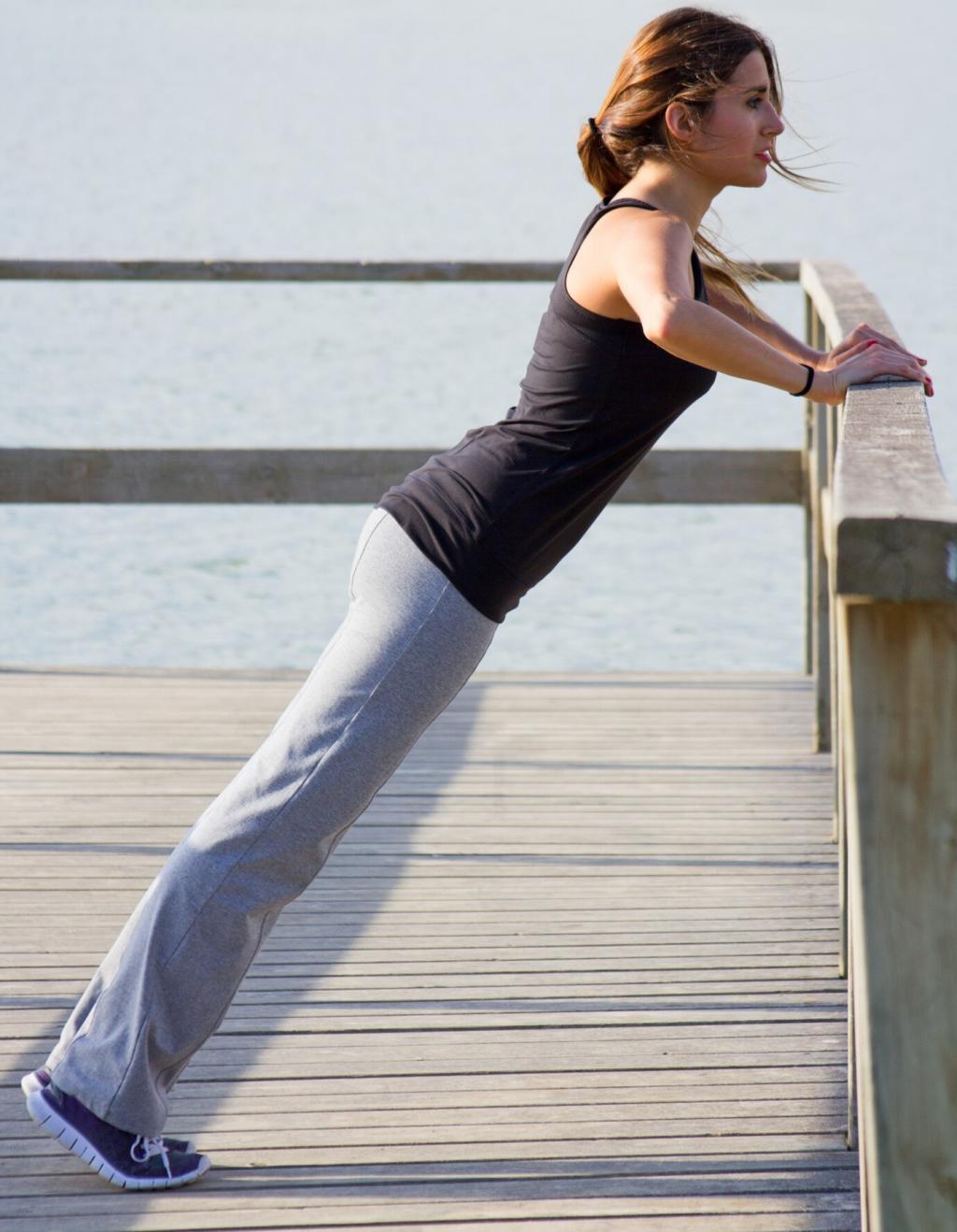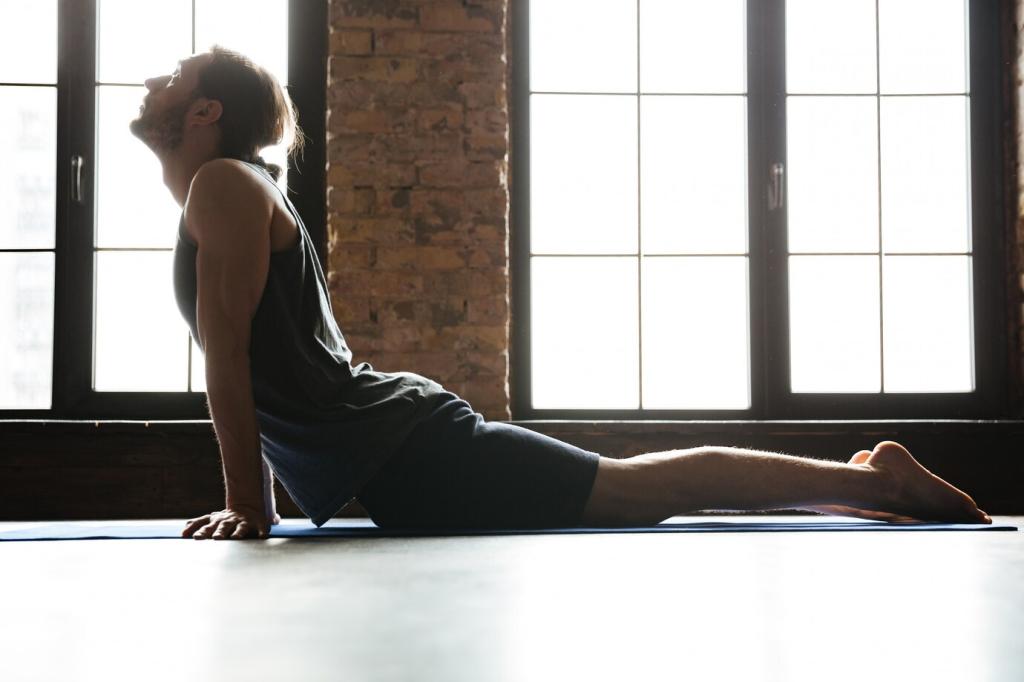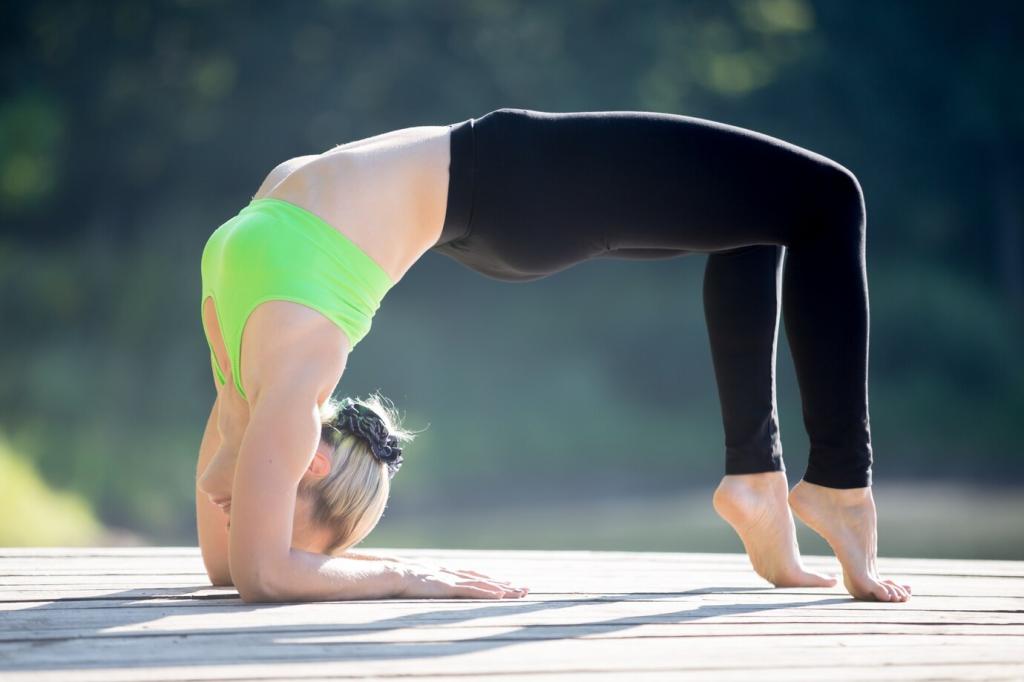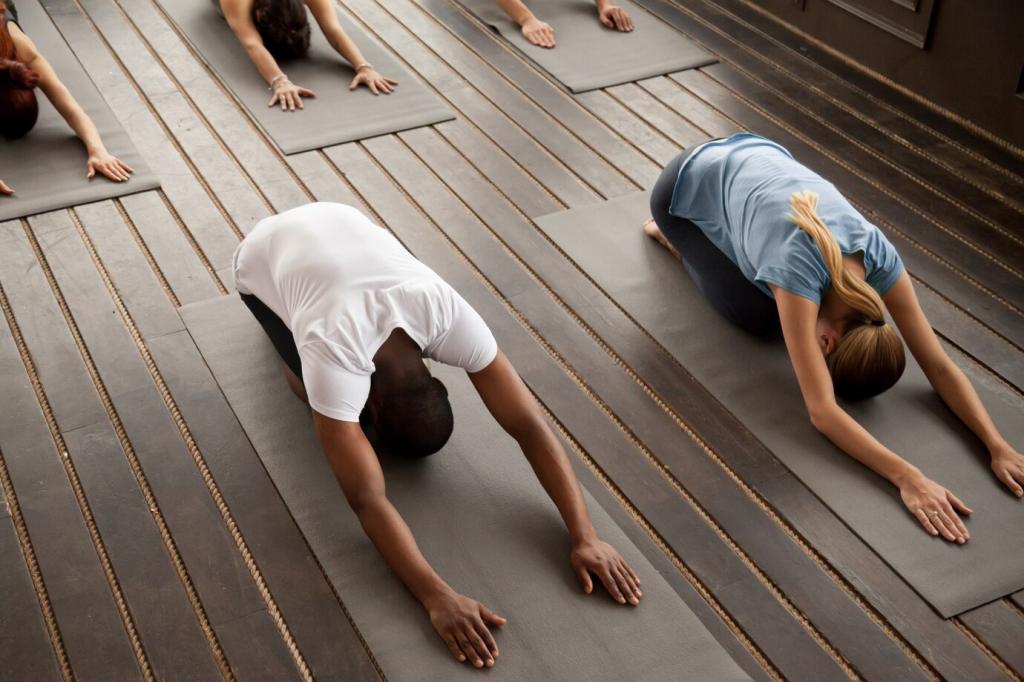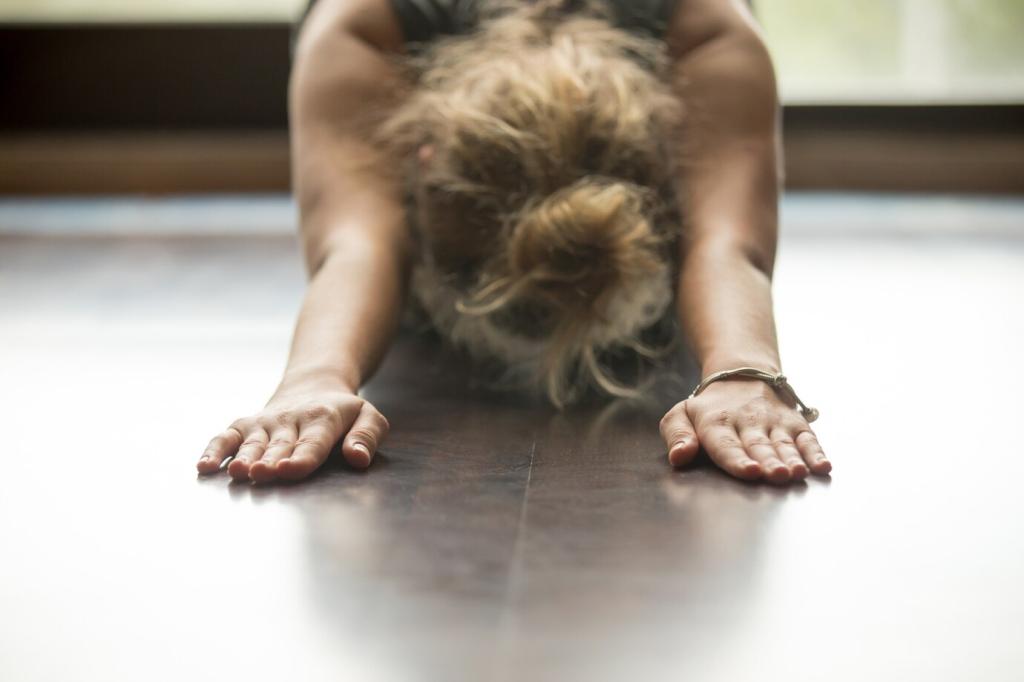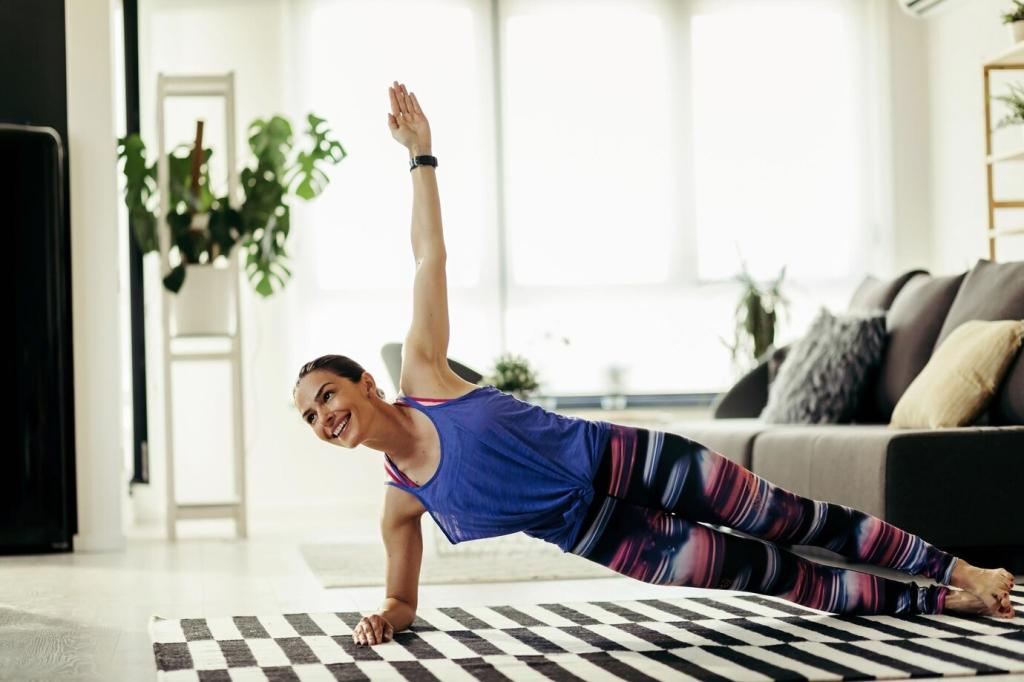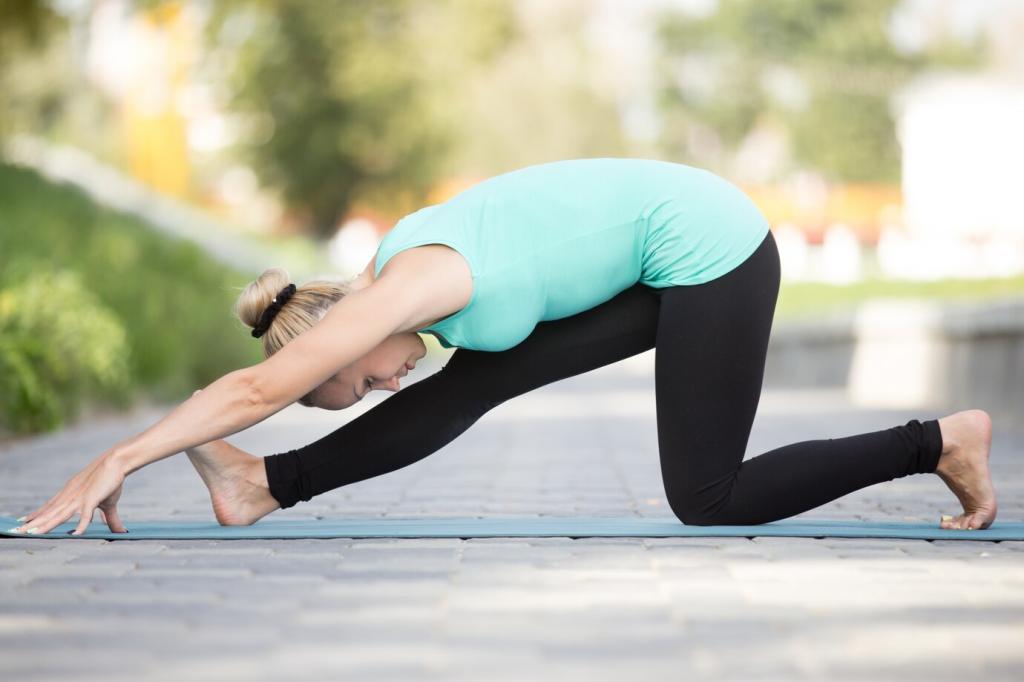Mountain Pose (Tadasana): Your Home Base
Stand with feet hip-width, press evenly through heels, big toe mounds, and outer edges. Soften knees slightly, lengthen your tailbone, and lift the crown. Let shoulder blades slide down while the ribs knit gently. This small, patient stacking organizes your body for calm power and clarity.
Mountain Pose (Tadasana): Your Home Base
Locked knees, flared ribs, and a jutting chin are common. Try a gentle micro-bend, knit front ribs toward the back body, and draw ears over shoulders. Keep arches awake, toes relaxed, and breath steady. These tiny adjustments transform stillness into supportive strength you can trust.
